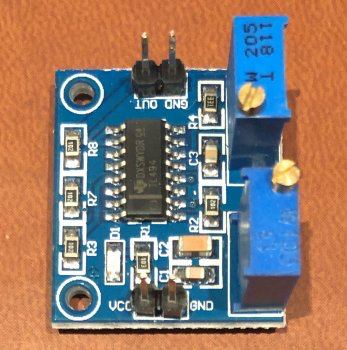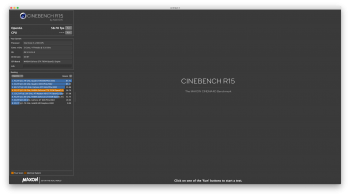Backlight Control
Background:
The 2011 iMac display backlight system uses pulse-width-modulation (
PWM) to control backlight intensity. A PWM control signal is generated within the logic board-video card circuit and routed to the PWM input on the backlight board. The PWM frequency is 13KHz and the pulse height is 3.25V. The duty cycle is varied from 0 to 100% to adjust backlight intensity from minimum to maximum. When a non-Apple video card is installed that lacks a proper EFI, the logic board-video card circuit outputs a duty cycle of 100% resulting in maximum backlight intensity which reduces contrast and generates extra heat. The solution is to isolate the logic board-video card and backlight board circuits from one another (cut the wire that connects them) and feed a desired duty cycle PWM signal into the backlight board PWM input using a low-cost PWM module based upon the Texas Instruments TL494 IC.
You will need the following supplies:
1. TL494 PWM module (purchase from
Amazon)
2. Wire (black for ground, red for 12V power, and 3rd color for PWM signal)
3. 1/4W Resistors – 1 x 1.8K and 1 x 6.8K
You will need the following tools:
1. Oscilloscope that has a bandwidth of 15KHz or greater and can measure frequency
2. Multimeter
3. Soldering iron and solder
4. 12V DC power supply
Step 1:
Solder the 1.8K resistor to the “OUT” pin, solder the 6.8K resistor to the “GND” pin adjacent to the “OUT” pin. Solder the other end of each resistor together. Note: This creates a voltage divider that reduces the output of the PWM module from 5V peak-peak to the backlight board required 3.25V peak to peak. The PWM output will be the connection between the two resistors and this will be fed to the PWM input on the backlight board.
 Step 2:
Step 2:
Connect the positive power supply lead to the “VCC” pin and the negative power supply lead to the to the “GND” pin adjacent to the “VCC” pin. Connect your oscilloscope to the PWM output and it’s adjacent “GND” pin. Adjust the two potentiometers on the PWM unit to achieve a frequency of 13KHz and duty cycle of 50%. Note: This will achieve a backlight intensity of 50%. If you want higher or lower backlight level adjust duty cycle accordingly.
 Step 3:
Step 3:
Remove backlight board and disconnect all connectors. Solder wires onto the board as pictured. Note:Red wire is 12V DC power, black wire is ground, and blue wire is PWM signal.

 Step 4:
Step 4:
Identify which wire is carrying PWM signal from logic board to backlight board and cut this wire on the wiring harness: Look at the female connector on the backlight board and identify the pin on the connector that is soldered to the blue wire. Look at the male connector on the wiring harness that connects to the backlight board to the power supply and identify the corresponding pin. Locate this wire and pull it through the sleeve on the wiring harness to identify which wire needs to be cut. Once cut, use multimeter on ohms setting to confirm the correct wire is cut. Note: Where the backlight board wiring harness connects to the power supply you will see two wires that don’t connect to the power supply but travel onward in the harness to the logic board. One of these is the “PWM signal” wire and the other is the “Backlight ON” wire.

 Step 5:
Step 5:
Install PWM module, route wires, and solder wires to PWM module as pictured. Note: The red wire goes to the “VCC” pin, the black wire to the “GND” pin, and the blue wire to the PWM output lead between the two resistors created in step 1.


 Step 6:
Step 6:
Reinstall LCD screen but do not yet install the LCD screws. Power on and boot iMac into macOS and adjust brightness with Brightness Slider App to determine if the range of brightness adjustability is where you want it. You can adjust potentiometer labeled D to increase or decrease the duty cycle to adjust the maximum backlight level to your liking (the potentiometer labeled “F” adjusts the PWM frequency – be careful not to change it). Reinstall LCD screws and screen glass. Congratulations - you’re done!














